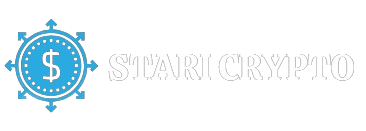What is Wormhole (W)? For the purpose of easing the movement of funds and data between different blockchain networks, Wormhole is among the most prominent interoperability protocols now in use. Wormhole improves the Decentralized Finance (DeFi) ecosystem’s asset and data accessibility and fluidity by linking 17 high-value chains through a single integration point. Solana isn’t a blockchain or token bridge in and of itself. Still, its design makes it easy for communities, initiatives, and platforms to transfer tokenized assets between blockchains quickly and cheaply.
Understanding Wormhole(W)
Beyond simple asset transfers, Wormhole provides a flexible platform for many more uses, including governance, games, and cross-chain exchanges. To greatly increase consumers’ access to liquidity, developers can build exchanges that take deposits from any linked chain. For governance purposes, groups of NFTs from several networks can use Wormhole to consolidate votes on a single chain, allowing for more streamlined decision-making. Additionally, Wormhole’s capacity to connect many blockchain settings for a unified user experience is demonstrated via games developed on performant networks, such as Solana, which can deliver awards on multiple chains.
Elements off-chain, such as the Guardian Network and VAAs (Verifiable Action Approvals), and on-chain, including the Emitter and Wormhole Core Contract, make up Wormhole’s architecture. Ensuring secure and genuine inter-chain transactions, this framework provides strong cross-chain communication by having the Guardians validate messages issued by the Core Contract. Notable teams like Circle and Uniswap trust Wormhole because of its design, which is based on the underlying concept that the network is secured by Guardian nodes that validate and sign messages.
Wormhole operates on the principle of security and governance. A network of nodes called Guardians checks and verifies cross-chain messages; a message needs a supermajority to be valid, which strengthens the protocol. Governance initiatives are subject to the same stringent security criteria and require approval from a two-thirds supermajority of Guardians. This demonstrates Wormhole’s rigorous approach to preserving its integrity and adaptability. Wormhole promotes innovation and community engagement in the ever-changing world of blockchain interoperability through its open-source governance system, bug bounty program, and periodic audits, all of which help to keep the platform secure.
What is the W Token?

Launching first on the Solana network as a native SPL token, the W token is now available on other chains as well. Wormhole, the platform that created the W token, is aiming for a more interoperable future, and this currency is meant to represent that ideal. Plans are afoot to bring W’s features to Ethereum and other EVM-compatible chains through Wormhole’s Native Token Transfers (NTT) feature after its deployment on Solana. This planned launch highlights the token’s goal of creating a really linked DeFi ecosystem by enabling frictionless asset transfers and interactions across various blockchain ecosystems.
Our tokenomics are thoughtful, with a maximum supply of 10 billion tokens and an initial supply of 1.8 billion. The W token will employ Wormhole’s Native Token Transfer architecture and be ERC20 and SPL, making it compatible with multiple blockchain networks. The token’s four-year vesting schedule for 82% of the W supply shows commitment to its long-term growth and stability in the cryptocurrency market.
The strategy calls for launching a W coin on Solana, then expanding to Ethereum and other EVM-compatible chains using Wormhole’s NTT. This technique shows the W token’s technological versatility and Wormhole’s infrastructure’s role in cross-chain capabilities. The roadmap’s token self-delegation feature allows W token holders to lock and delegate their tokens, actively participating in governance procedures on both the Solana and EVM chains.
Wormhole’s governance system, funded by the W token and running on Solana, Ethereum mainnet, and EVM L2s, introduces a multichain governance paradigm. W token holders can decide protocol-changing issues under this paradigm. Therefore, Options include controlling blockchain connections, upgrading smart contracts, changing costs, and increasing the Guardian set. This participatory governance method democratizes Wormhole ecosystem decision-making and boosts its utility by aligning the token with platform development and DeFi ecosystem needs.
How to Buy Wormhole (W)
1. Log in to your account or sign up to create one.
2. Go to the Deposit page.
3. In the Cryptocurrencies section, choose the crypto you plan to buy W with and generate a deposit address on the Exchange wallet.
4. Send the crypto to the generated deposit address.
5. Once the funds arrive in your wallet, you can trade them for W.
















